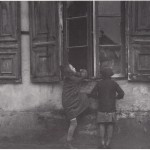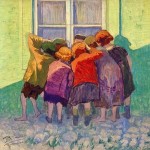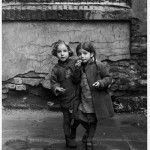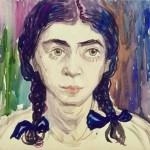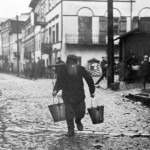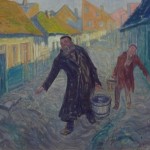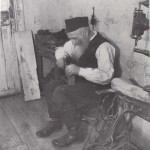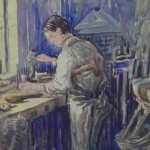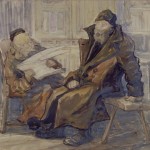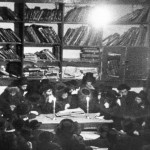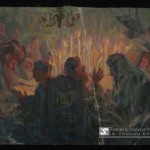I’ve frequently been asked, “Were Roman Vishniac and Moshe Rynecki aware of each other’s work?” I really have no idea, but they were contemporaries and the subjects and themes in the work of each artist are remarkably similar. I always like to say that my great-grandfather painted the same sorts of people and communities around the same time, if not slightly before, Vishniac photographed them.
Roman Vishniac was born in Russia in 1897 to wealthy and secular Jewish parents. The family eventually moved to Germany and then later to the United States. Vishniac is perhaps best known for photographing Jews in Central and Eastern Europe before the Holocaust. His book A Vanished World, published in 1983, is a detailed pictorial documentation of Jewish culture in Eastern Europe in the 1930s. It is not, however, without a bit of controversy. The story is well told in a 2010 New York Times piece: A Closer Reading of Roman Vishniac, that lends insight and understanding into the back story of his photographic mission and purpose.
Sometimes I like to match up Vishniac photographs with Rynecki paintings that seem so very alike in subject and composition. Below are six pairs I’ve made for a side-by-side look. You can click on any to see a slide show of larger versions of the images.
**Note: All the black and white photographs are the work of Roman Vishniac and can all be found in the book, A Vanished World. The first five Moshe Rynecki paintings are held by the Rynecki family. The one at the bottom, Jews with Candles, is held by the Jewish Historical Institute (ZIH) in Warsaw, Poland.**
- Slovakia, 1935
- Curious Children, 1928
- Lodz, 1938
- Girl w/Braids+Bows, undated
- Lublin, 1937
- Water Carriers, 1930
- Warsaw, 1937
- Shop worker, undated
- Warsaw, 1937
- Reading the News, undated
- Mukachevo, 1938
